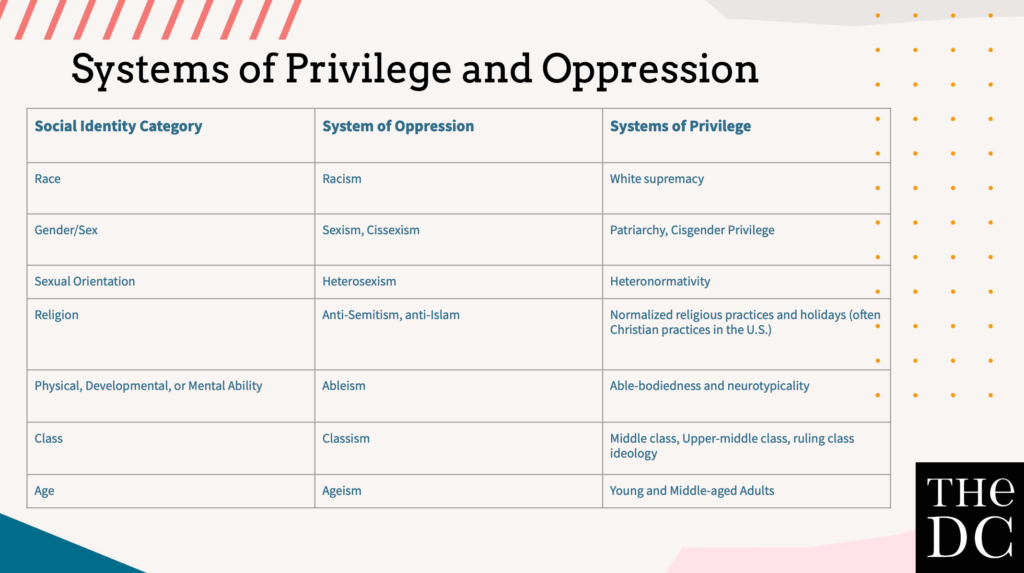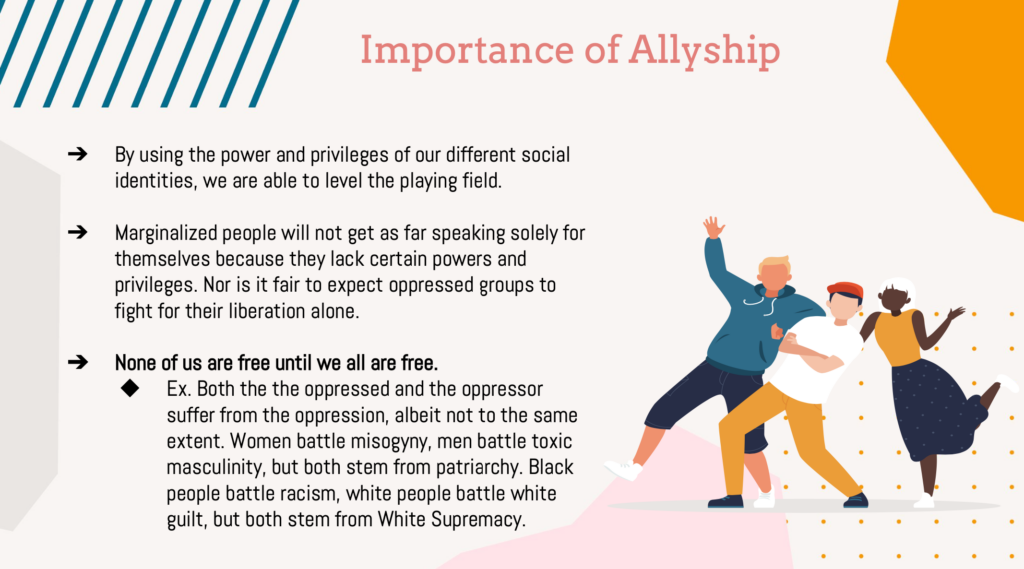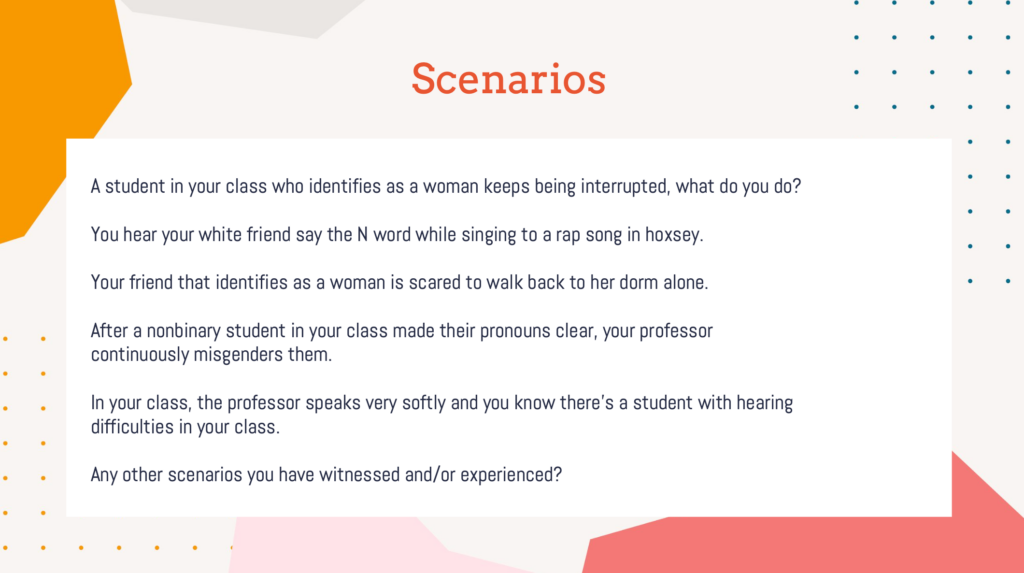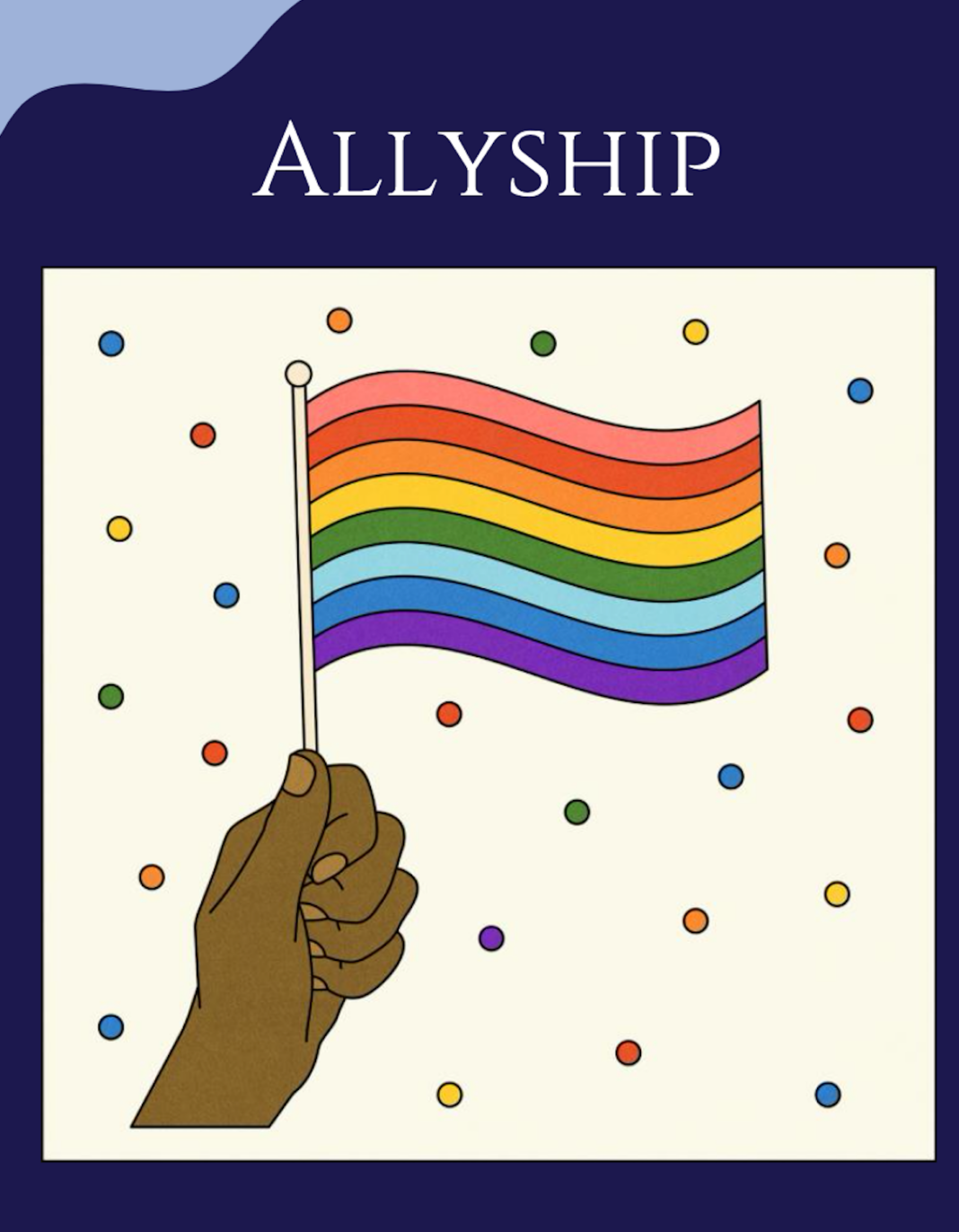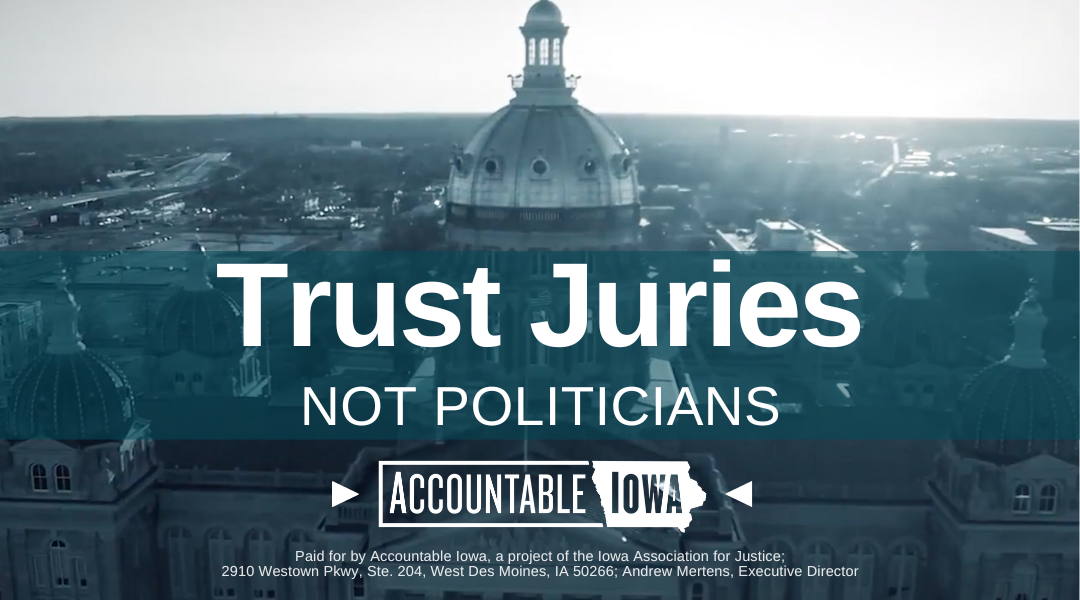A freshman English class went over a lesson on “allyship” at Bettendorf. The lesson was given by a teacher called Paige Sheppard.
Documents used for the lesson was a discussion guide for chapters 8-12 of Dear Martin, an ally accomplice co-conspirator PowerPoint and an allyship workshop PowerPoint used as a reference document.
Dear Martin is a “social justice book” about a 17-year-old called Justyce, who has his life upended by being wrongfully arrested for a crime based on his race.
One reviewer said the book is “typical liberal, brainwashing material intended to influence the audience to believe police are racist murderers.”
Another said they are “brown” and employ black and white people. They wrote that their kids are white and their friends, girlfriends and boyfriends are black, white and brown.
“This is absolute bullmalarky,” the reviewer wrote. “We live in the south, and even we know that you get treated how you deserve. If you’re trouble, you’re gonna catch trouble. If you’re straight and narrow, you’re not going to have problems. Are there crappy people all over? Yes. Is that the standard? Absolutely not! Stop with this mess and let folks do what they do without this constant lie.”
Another wrote the book feeds into the “hate agenda.” And yet another wrote it is “highly racist and divisive.”
The lesson was focused on privilege and allyship.
One of the resources used was a privilege activity and this video:
Another resource called “What does it mean to be an ally,” went over definitions of ally as a noun, ally as a verb and alliance as a noun. It featured use of the terms when it comes to social justice.
“In the field of social justice studies, the idea of being an ally to another person or group of people has become a key concept in examining issues of oppression and privilege,” it states.
Another resource, “Guide to Allyship,” notes that to be an ally is to transfer the benefits of your privilege to those who lack it and amplify voices of the oppressed before your own.
This resource states that “ally” is overused and more people are “unable to fulfill the duties allyship requires.”
In the specific section linked in the discussion guide, the resource states:
“The best definition of “ally” (that I’ve found) comes from author Roxane Gay in her article for Marie Claire, “On Making Black Lives Matter.” In it, she notes:
Black people do not need allies. We need people to stand up and take on the problems borne of oppression as their own, without remove or distance.
We need people to do this even if they cannot fully understand what it’s like to be oppressed for their race or ethnicity, gender, sexuality, ability, class, religion, or other marker of identity.
We need people to use common sense to figure out how to participate in social justice.”
When it comes to the work of allyship, it states this:
“If you refuse to acknowledge that your words and actions are inherently shaped and influenced by systemic oppression, you’re setting up yourself to fail.
“Lack of self-awareness is not a trait of an ally. You’ll be complicit in the oppression of those you intend to help. If you choose not to understand this, but label yourself an “ally”, you’re essentially a wolf in sheep’s clothing. You’ll find ways to infiltrate vulnerable communities and wield far more power than someone who is outwardly ‘-ist’ or ‘-ic’ because you’re ‘trusted.'”
This video was included in the discussion guide. It provides five tips for being an ally:
- Understand your privilege…”all it means is there are some things in life that you will not experience or ever have to think about just because of who you are.” Examples given are states where someone can be fired for being a homosexual or transgender.
- Listen and do your homework.
- Speak up, but not over…”use your privilege and your voice to educate others, but make sure to do it in such a way that does not speak over the community members that you’re trying to support or take credit for things that they already saying.”
- You’re going to make mistakes, and apologize when you do…”it’s not about your intent, it’s about your impact. So when you get called out make sure to listen, apologize, commit to changing your behavior and move forward.”
- Remember that ally is a verb.
One of the tasks students are given by the discussion guide is to give their stance on the idea of allyship and privilege.
The PowerPoint given in class on allyship included the following slide, noting students could be an ally for “marginalized” groups such as people of color and LGBTQ members.
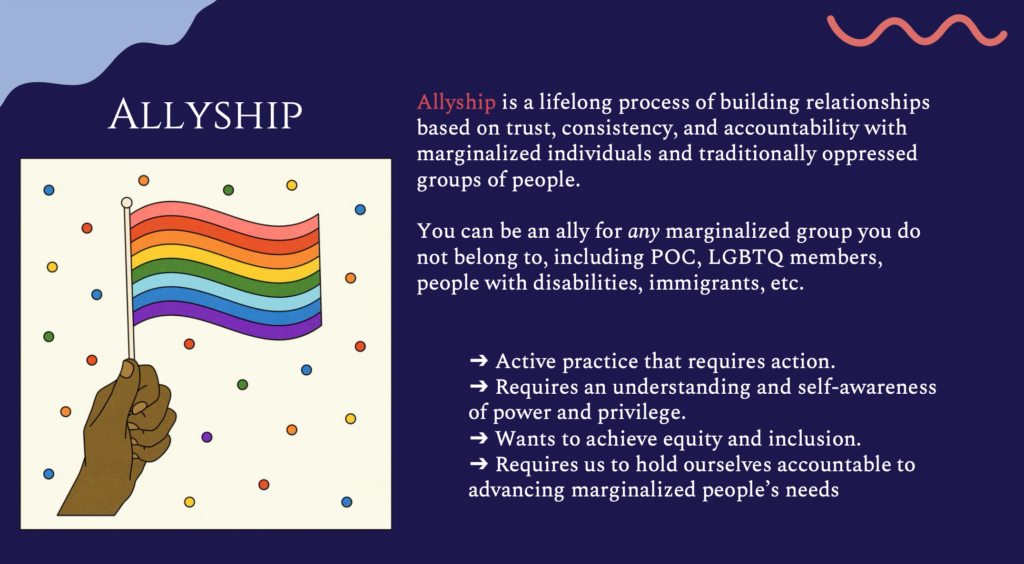
This slide discusses the “accomplice” framework which challenges the “morality of the legal system.”
“In order to achieve equity sometimes laws must be broken.”
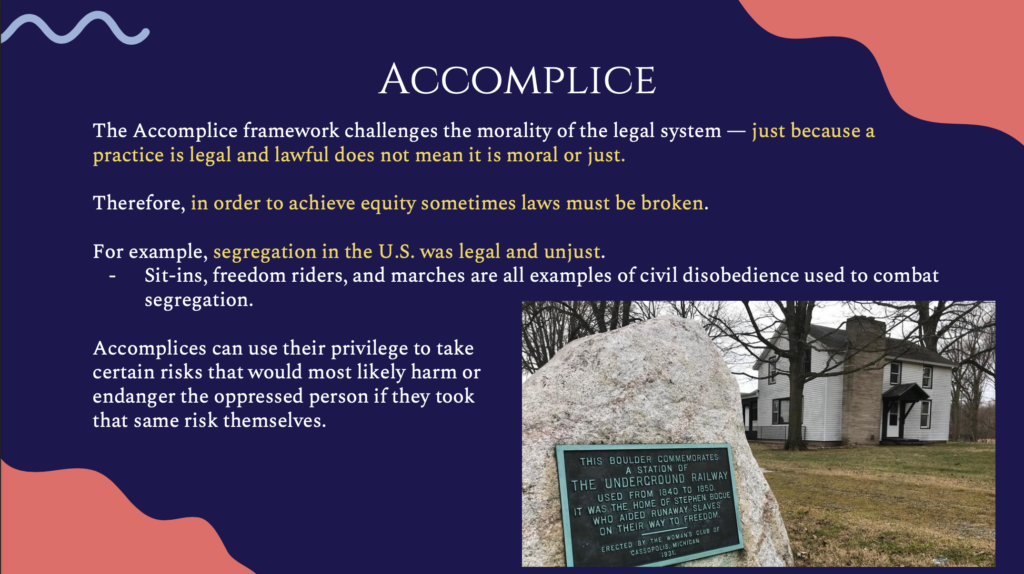
This slide discusses recognizing privilege:
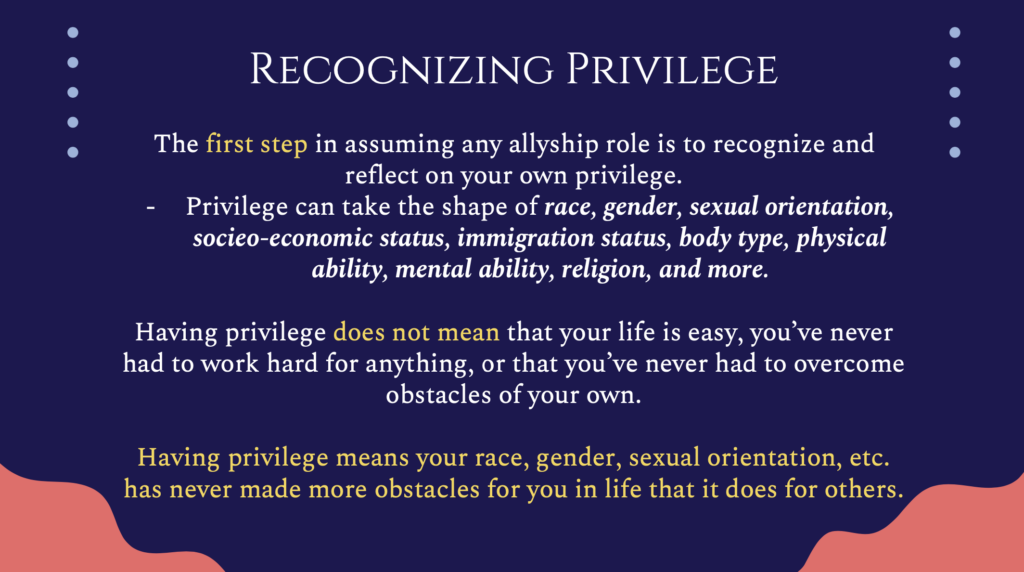
The allyship workshop PowerPoint, which was used as a reference document, states allyship is a process of building relationships based on trust, consistency and accountability with “marginalized individuals” and “traditionally oppressed groups of people.”
The resource guide notes social identity categories divided by “gender,” with options being female, male and “other genders.”
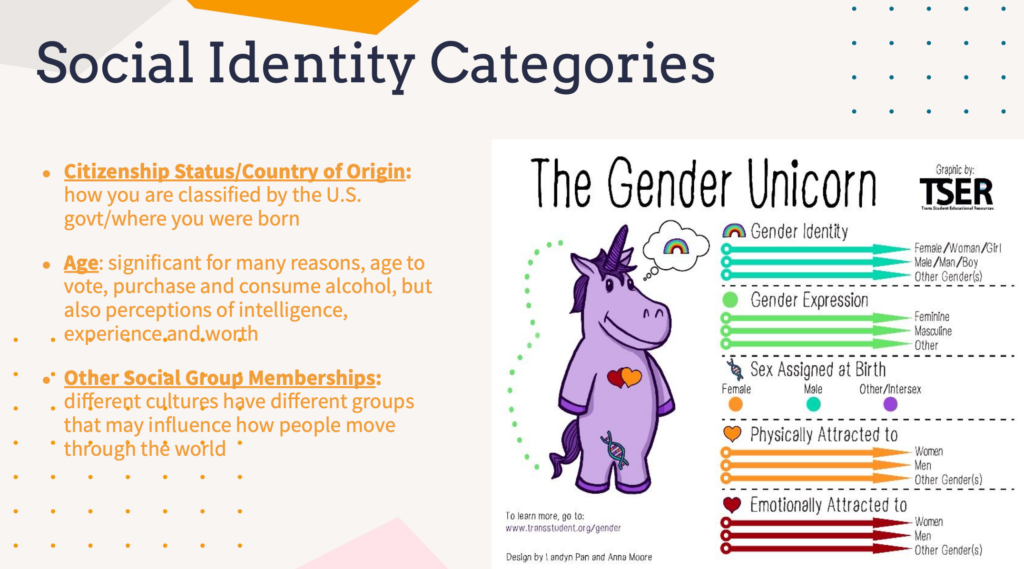
It provides examples of privilege:
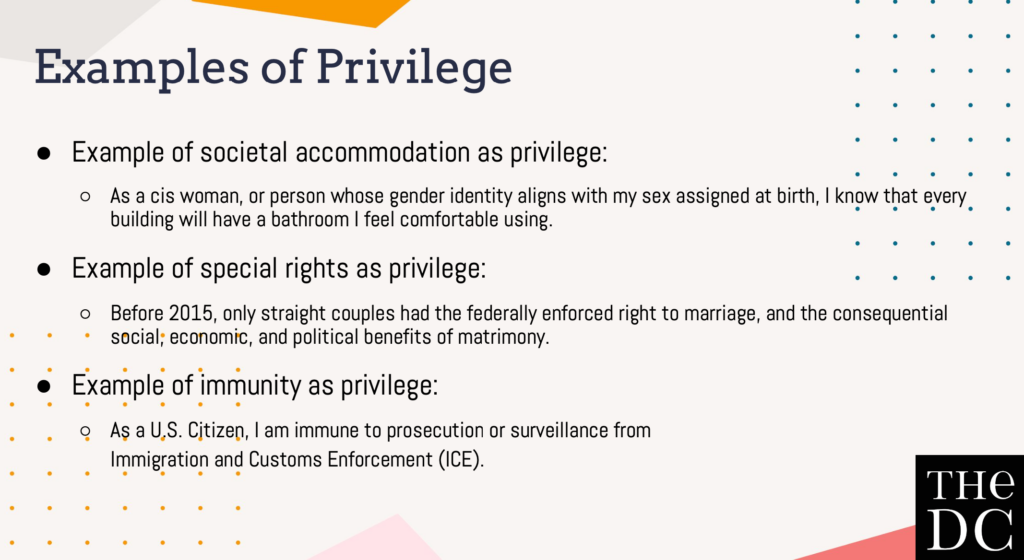
And then it lists systems of privilege and oppression:
